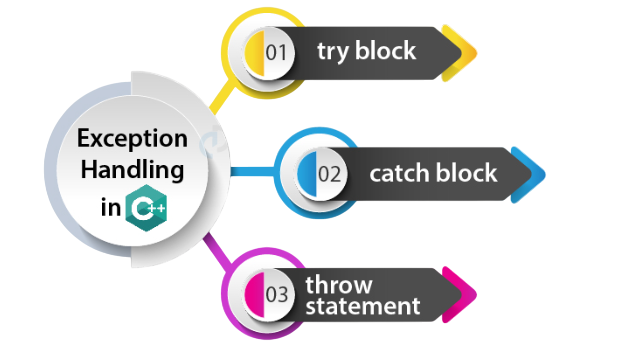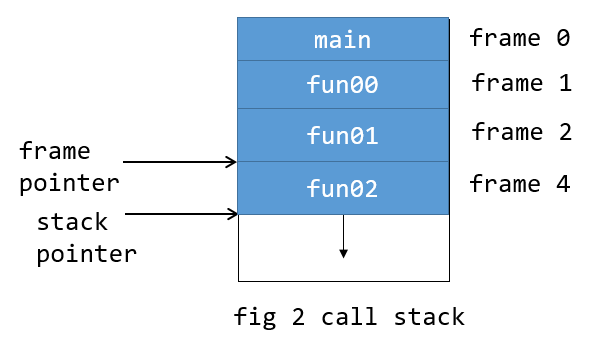
- What is an Exception?
- Need for Exception Handling
- try, catch, and throw Keywords
- Nested try Blocks
- Custom Exception Classes
- Stack Unwinding
- Exception Specification
- Conclusion
What is an Exception?
An exception in C++ refers to an unexpected event or anomaly that occurs during the execution of a program. These events disrupt the normal flow of the program and may result from various issues such as invalid user input, division by zero, memory allocation failures, or accessing out-of-bound elements in an array. Exceptions provide a structured, manageable way to handle errors without cluttering the main logic of the program with error-checking code. By using exception handling mechanisms, C++ allows developers to separate error-handling code from regular code, Cloud Computing Training improving readability, maintainability, and robustness. An exception is an event that occurs during the execution of a program that disrupts the normal flow of instructions. It is a way for a program to signal that something unexpected or erroneous has happened, such as division by zero, accessing an invalid memory location, or trying to open a file that does not exist. Exceptions allow a program to respond to these issues gracefully, rather than crashing or producing incorrect results. In programming languages like C++, exceptions are objects that represent error conditions or unusual situations. When an exception occurs, it is “thrown,” transferring control from the current code to a special exception handling mechanism. This mechanism typically uses blocks of code known as try and catch to handle exceptions. The try block contains code that might cause an exception, while the catch block defines how to handle specific types of exceptions Exploring Software Engineering. Exceptions improve the robustness and reliability of software by separating error-handling code from regular logic. They enable developers to write cleaner code and manage errors systematically. Without exceptions, error handling would be more cumbersome, often requiring multiple checks and error codes scattered throughout the program. Overall, exceptions are essential for building fault-tolerant and maintainable applications.
To Earn Your Cloud Computing Course Certification, Gain Insights From Leading Cloud Computing Experts And Advance Your Career With ACTE’s Cloud Computing Course Today!
Need for Exception Handling
- Graceful Error Recovery: Allows programs to handle errors without crashing unexpectedly.
- Separation of Concerns: Keeps error-handling code separate from regular business logic, improving code clarity.
- Improved Program Reliability: StringBuilder Helps ensure that programs can continue running or exit cleanly after encountering errors.
- Simplifies Debugging: Centralizes error handling, making it easier to identify and fix issues.
- Avoids Silent Failures: Prevents errors from being ignored, which can lead to unpredictable behavior later.
- Supports Robust Software Design: Encourages developers to anticipate and manage exceptional conditions.
- Resource Management: Ensures resources like memory or files are properly released even when errors occur.
- Cross-Layer Communication: Provides a standard way to propagate errors across different layers or modules in an application.
try, catch, and throw Keywords
C++ uses three primary keywords for exception handling: try, catch, and throw. The try block contains the code that may produce an exception. If an exception occurs, it is “thrown” using the throw keyword, which transfers control to the corresponding catch block. Pointers in C The catch block then handles the exception appropriately.

- try {
- throw 20;
- } catch (int e) {
- std::cout << "An exception occurred: " << e << std::endl;
- }
The throw statement signals the occurrence of an anomaly. It is essential to match the type of the thrown exception in the catch block; otherwise, the exception will go unhandled.
Would You Like to Know More About Cloud Computing Course? Sign Up For Our Cloud Computing Course Now!
Nested try Blocks
C++ allows nesting of try blocks, which means a try block can exist inside another try or catch block. Cloud Computing Training This feature is particularly useful in scenarios where error-handling itself can result in an exception.
- try {
- try {
- throw “Inner Exception”;
- } catch (const char* msg) {
- std::cout << "Caught in inner block: " << msg << std::endl;
- throw;
- }
- } catch (const char* msg) {
- std::cout << "Caught in outer block: " << msg << std::endl;
- }
Nested try blocks provide fine-grained control over error management, allowing recovery strategies at multiple levels of the application.
Custom Exception Classes
Custom Exception Classes C++ allows developers to define their own exception classes to represent specific error conditions. Linux Operating System This is done by creating a class that typically inherits from the standard std::exception class.
- class MyException : public std::exception {
- public:
- const char* what() const noexcept override {
- return “My custom exception occurred”;
- }
- };
- try {
- throw MyException();
- } catch (const MyException& e) {
- std::cout << e.what() << std::endl;
- }
Using custom exceptions enhances clarity and specificity in error reporting, making it easier to identify the source and nature of the error.
Gain Your Master’s Certification in Cloud Computing by Enrolling in Our Cloud Computing Master Program Training Course Now!
Stack Unwinding
When an exception is thrown, C++ performs a process called stack unwinding. This means the runtime system starts React Hooks cleaning up the stack by destructing all local objects in scope until a matching catch block is found.

This process ensures that resources are released properly, even in the presence of errors. However, improper handling during stack unwinding can lead to resource leaks or program crashes, which is why it is recommended to use RAII (Resource Acquisition Is Initialization) principles in C++.
Are You Interested in Learning More About Cloud Computing Course? Sign Up For Our Cloud Computing Course Today!
Exception Specification
Older versions of C++ supported specifying the types of exceptions a function could throw using throw(Type), but this feature has been deprecated in C++11 and completely removed in C++17. Modern C++ uses noexcept to Break and Continue In C specify functions that do not throw exceptions. This enhances performance and helps the compiler optimize the code better.
- void myFunction() noexcept { // Function guaranteed not to throw exceptions
- }
Using noexcept informs both the compiler and the programmer about the exception safety of the function.
Preparing for Cloud Computing Job Interviews? Have a Look at Our Blog on Cloud Computing Interview Questions and Answers To Ace Your Interview!
Conclusion
Exception handling in C++ is a powerful feature that enables developers to manage and recover from runtime errors effectively. With the help of try, catch, and throw constructs, developers can create robust and fault-tolerant applications. Understanding concepts like stack unwinding, custom exceptions, and standard exceptions empowers developers to write safer and cleaner code. By following best practices and avoiding common mistakes, programmers can harness the full potential of exception handling to build scalable, high-performance software applications. As C++ evolves, Cloud Computing Training modern practices like using noexcept, RAII, and smart pointers further strengthen exception safety and program design. Exception handling is a vital mechanism in programming that enables developers to manage errors and unexpected situations gracefully. By using constructs like try, catch, and throw, programs can separate normal logic from error-handling code, improving readability and maintainability. Proper exception handling enhances software reliability, prevents crashes, and ensures resources are managed correctly even in adverse conditions. Understanding how to create custom exceptions, handle nested exceptions, and use stack unwinding effectively is key to writing robust applications. Overall, mastering exception handling empowers developers to build fault-tolerant and user-friendly software.





